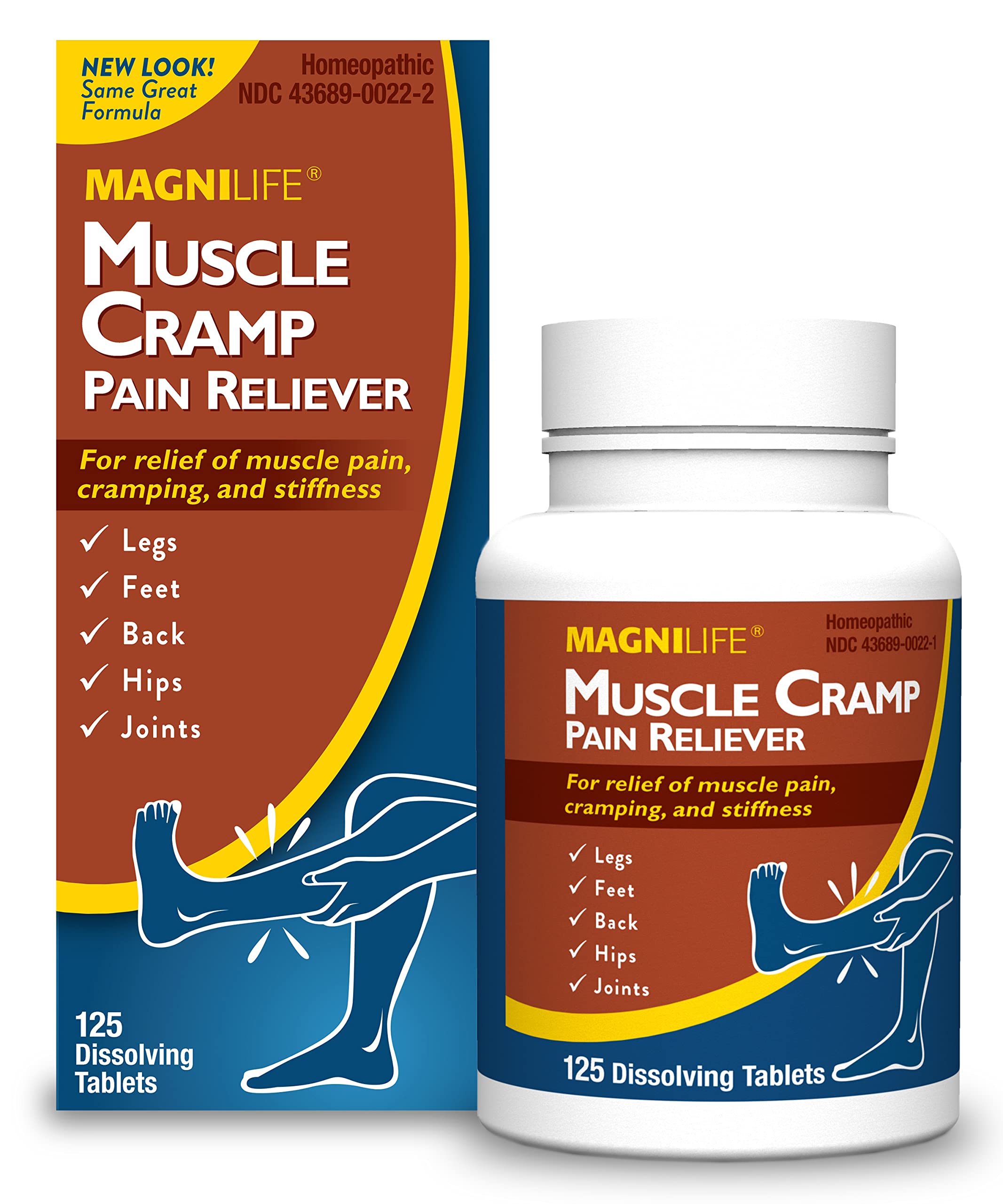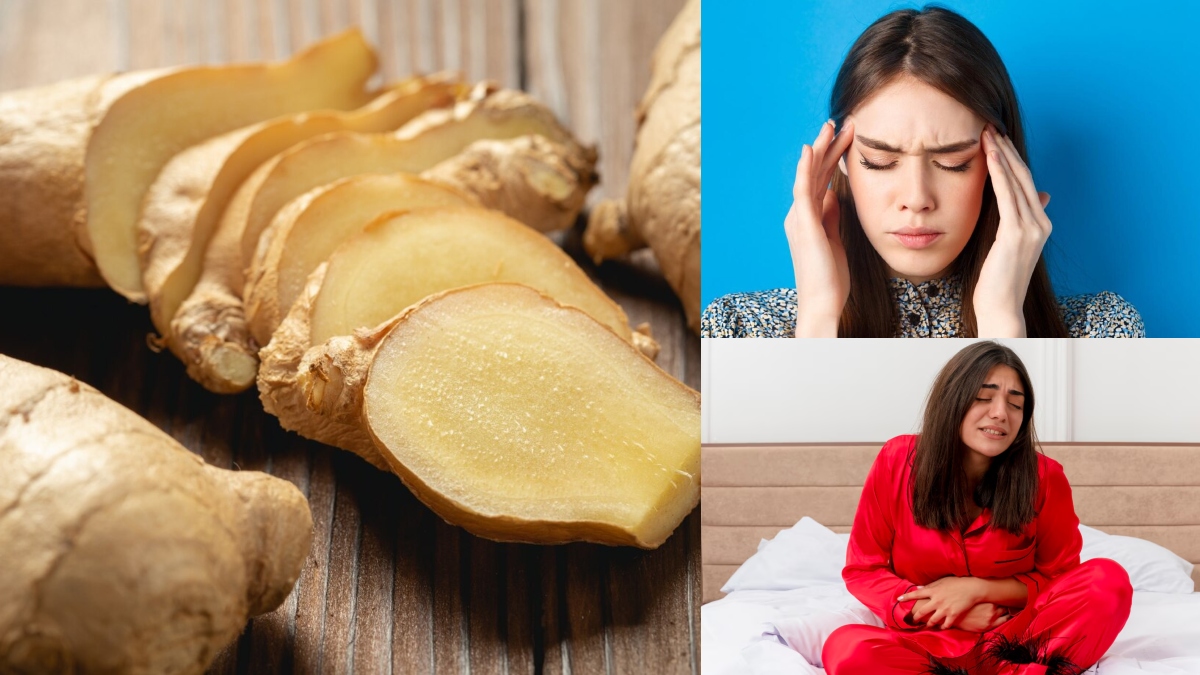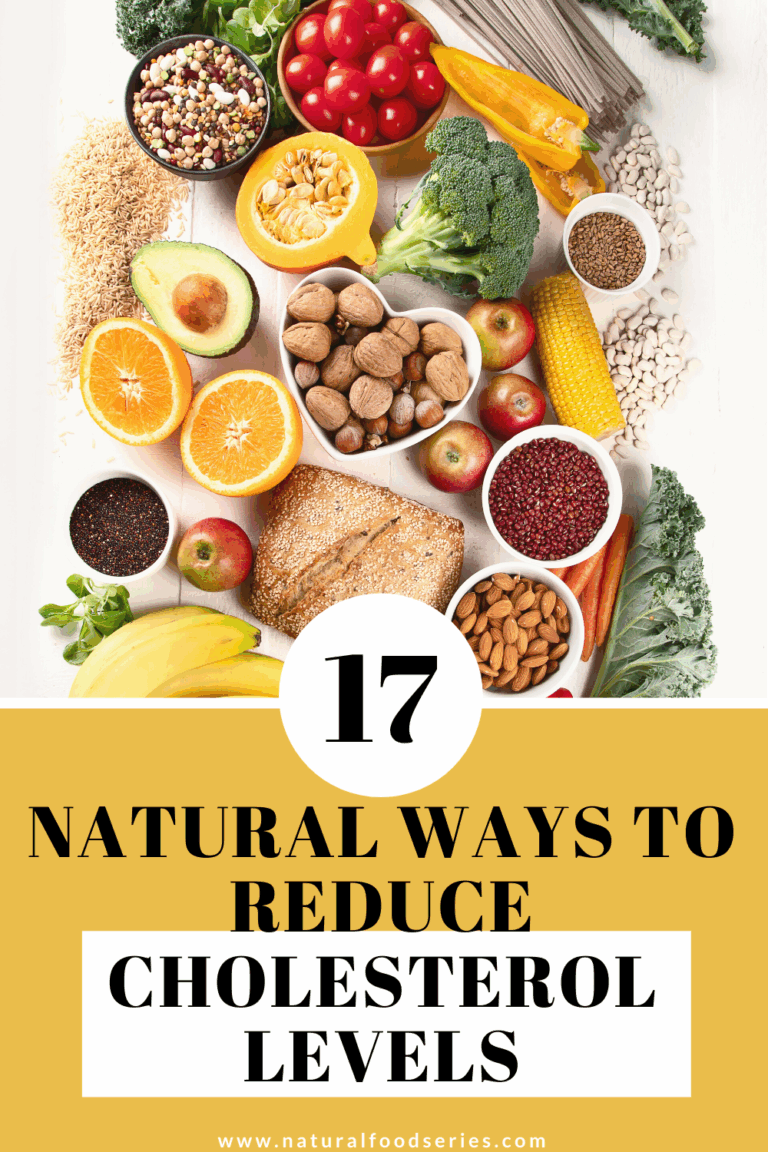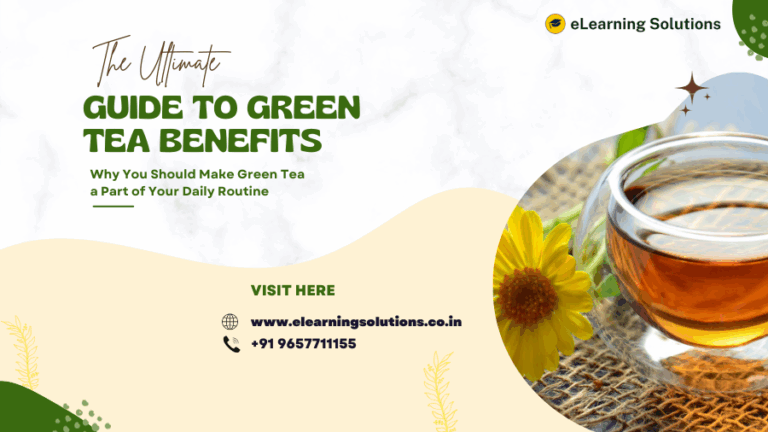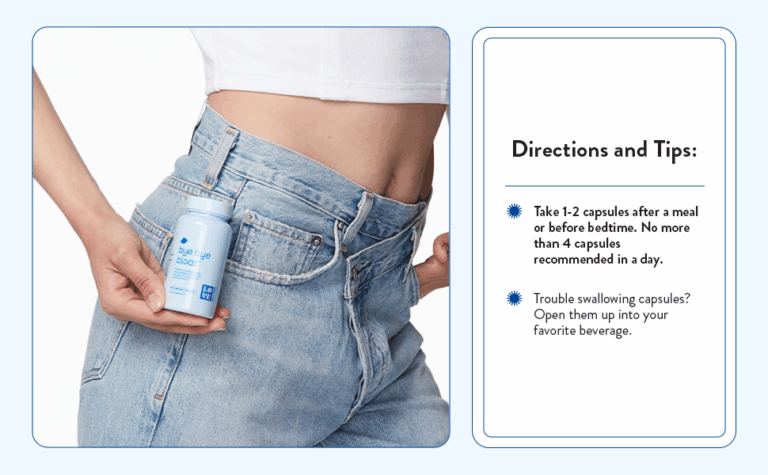The Ancient Root, Reimagined: Unearthing Ginger’s Potent Role as The Natural Painkiller for Muscle Aches and Cramps
In the tapestry of human existence, few experiences are as universally understood, yet as individually debilitating, as pain. Whether it’s the searing aftermath of an intense workout, the persistent throb of chronic muscle tension, or the cramping grip of menstruation, our bodies frequently remind us of their limits. For millennia, humanity has sought solace, relief, and healing from the natural world, often turning to the earth’s bounty before the advent of synthetic compounds. Among the pantheon of botanical healers, one root stands out, its golden flesh and pungent aroma whispering tales of ancient wisdom and potent efficacy: ginger.
This isn’t merely a tale of a spice rack staple; it’s the story of Zingiber officinale, a venerable elder among medicinal plants, stepping onto the modern stage as a formidable, natural painkiller. It’s a narrative that bridges the chasm between time-honored folk remedies and the rigorous scrutiny of contemporary science, revealing ginger as a sophisticated pharmacological agent capable of quelling the fires of inflammation and soothing the sharp edges of muscle pain and cramps. For the knowledgeable seeker of natural solutions, this journey into ginger’s heart offers not just relief, but a deeper understanding of the sophisticated alchemy that nature offers.
Chapter 1: A Whisper from the Past – Ginger’s Enduring Legacy
Our story begins not in a laboratory, but in the lush, tropical landscapes of Southeast Asia, where ginger first emerged as a culinary and medicinal powerhouse over 5,000 years ago. From these verdant origins, its fame spread like wildfire along ancient trade routes, carried by intrepid merchants and revered by diverse cultures.
In India, Ayurvedic medicine, one of the world’s oldest holistic healing systems, hailed ginger as "Vishwabheshaj," the universal medicine. It was prescribed for a staggering array of ailments, from digestive woes and respiratory infections to, crucially, pain and inflammation. Its warming properties were believed to balance the body’s energies, promoting circulation and alleviating stiffness.
Across the Himalayas, Traditional Chinese Medicine (TCM) embraced ginger with equal fervor. Known as "Sheng Jiang" (fresh ginger) or "Gan Jiang" (dried ginger), it was a cornerstone of herbal formulations designed to warm the interior, expel cold, and invigorate blood circulation – all essential components for alleviating pain, especially that rooted in dampness or cold. For muscle spasms and menstrual cramps, ginger was a go-to remedy, often brewed into potent teas or incorporated into warming poultices.
The ancient Greeks and Romans, captivated by its exotic allure and therapeutic prowess, imported ginger, using it to treat digestive issues, as an aphrodisiac, and for its purported anti-inflammatory effects. The famed Roman physician Dioscorides, in his monumental work "De Materia Medica," documented ginger’s use extensively, cementing its place in Western herbal traditions.
This consistent, cross-cultural reverence for ginger, spanning millennia and continents, is not a mere coincidence. It speaks to an intrinsic efficacy, a palpable therapeutic effect that generations experienced firsthand. These ancient whispers, passed down through oral traditions and meticulously recorded texts, laid the groundwork for the scientific inquiry that would eventually decode ginger’s secrets. They tell a story of an enduring relationship between humanity and a powerful root, a partnership built on trust and profound healing.
Chapter 2: The Science Unveiled – Deconstructing Ginger’s Powerhouse
Having journeyed through history, we now pivot to the microscopic world, where the true magic of ginger unfolds. For the knowledgeable audience, understanding how ginger works is as crucial as knowing that it works. Modern phytochemistry has painstakingly isolated and identified the myriad bioactive compounds responsible for ginger’s therapeutic effects, particularly its prowess as an anti-inflammatory and analgesic agent.
The primary architects of ginger’s power are a class of pungent phenolic compounds, notably:
- Gingerols: These are the most abundant active compounds in fresh ginger. They are responsible for much of ginger’s characteristic flavor and its immediate anti-inflammatory and antioxidant properties. -gingerol, -gingerol, and -gingerol are the most prominent.
- Shogaols: When ginger is dried, cooked, or aged, gingerols undergo a dehydration reaction, transforming into shogaols. -shogaol is particularly potent, exhibiting even stronger anti-inflammatory, antioxidant, and analgesic activities than its gingerol precursors. This transformation explains why dried ginger powder can sometimes feel more "spicy" or potent than fresh ginger.
- Paradols: Another class of compounds found in ginger, paradols contribute to its pungency and also possess anti-inflammatory and pain-relieving effects.
These compounds don’t work in isolation; they orchestrate a complex symphony of biochemical interactions within the body. Their primary mechanisms of action, particularly relevant to muscle aches and cramps, include:
A. The Anti-Inflammatory Maestro:
Inflammation is the body’s natural response to injury or irritation, but chronic or excessive inflammation underlies much of our pain experience, especially in muscles. Gingerols and shogaols act as formidable anti-inflammatory agents by targeting several key pathways:
- Cyclooxygenase (COX) Inhibition: This is a mechanism shared with many conventional non-steroidal anti-inflammatory drugs (NSAIDs) like ibuprofen. Ginger compounds, particularly gingerols and shogaols, have been shown to inhibit the activity of cyclooxygenase-1 (COX-1) and cyclooxygenase-2 (COX-2) enzymes. These enzymes are crucial for the synthesis of prostaglandins, lipid compounds that act as local hormones, promoting inflammation, pain, and fever. By blocking COX activity, ginger effectively reduces the production of these pro-inflammatory mediators. Unlike many NSAIDs, ginger’s inhibition is often described as dual-acting, influencing both COX-1 and COX-2 without the severe gastrointestinal side effects often associated with selective COX-2 inhibitors.
- Lipoxygenase (LOX) Inhibition: In addition to COX, ginger also modulates the lipoxygenase pathway, which is responsible for the production of leukotrienes – another group of inflammatory mediators involved in allergic reactions and asthma, but also contributing to general inflammation.
- Cytokine Modulation: Ginger compounds have been observed to suppress the production of pro-inflammatory cytokines such as Tumor Necrosis Factor-alpha (TNF-α) and various interleukins (e.g., IL-1β, IL-6). These cytokines act as messengers in the immune system, amplifying the inflammatory response. By dampening their production, ginger helps to cool down the systemic inflammatory cascade.
- NF-κB Pathway Inhibition: Nuclear factor-kappa B (NF-κB) is a protein complex that controls the transcription of DNA, cytokine production, and cell survival. It plays a critical role in regulating the immune response to infection and inflammation. Chronic activation of NF-κB is implicated in numerous inflammatory diseases. Ginger compounds have been shown to inhibit the activation of NF-κB, thereby reducing the expression of genes that code for pro-inflammatory enzymes and cytokines.
B. The Analgesic Artisan (Pain Relief):
Beyond its anti-inflammatory effects, ginger also possesses direct pain-relieving properties:
- TRPV1 Receptor Modulation: The transient receptor potential vanilloid 1 (TRPV1) is a protein that functions as a pain receptor. It is activated by heat, acidity, and various pungent compounds (like capsaicin in chili peppers). Interestingly, gingerols and shogaols interact with TRPV1 receptors. While capsaicin activates TRPV1, leading to a burning sensation followed by desensitization (which can reduce pain over time), ginger’s interaction is more nuanced. Some research suggests it can modulate TRPV1 activity, contributing to its pain-relieving effects.
- Nitric Oxide (NO) Synthesis: Nitric oxide is a signaling molecule involved in various physiological processes, including pain modulation. Ginger compounds may influence the production and activity of nitric oxide, contributing to its analgesic effects.
- Direct Muscle Relaxation: While not as potent as pharmaceutical muscle relaxants, ginger’s warming and circulatory effects, coupled with its anti-inflammatory action, can contribute to a subtle relaxation of tense muscles, easing stiffness and reducing the sensation of cramp.
C. The Antioxidant Shield:
Oxidative stress, caused by an imbalance between free radicals and antioxidants in the body, contributes significantly to cellular damage and inflammation, especially after strenuous exercise (leading to DOMS). Ginger is a powerful antioxidant, thanks to its rich phenolic compounds. It helps neutralize free radicals, protecting cells from damage and further reducing the inflammatory burden. This protective effect is particularly valuable in the context of muscle recovery.
In essence, ginger doesn’t just mask pain; it intervenes at multiple levels of the pain and inflammatory cascade. It’s a sophisticated natural pharmaceutical, working synergistically through its diverse compounds to offer comprehensive relief, making it an ideal candidate for addressing muscle aches and cramps.
Chapter 3: Targeting the Ache – Ginger’s Specific Action on Muscles
Now, let’s bring our focus sharply to the specific domain of muscle aches and cramps. This is where ginger’s multifaceted mechanisms translate directly into tangible relief, making it a natural ally for athletes, desk warriors, and anyone who experiences the common indignities of bodily discomfort.
A. Conquering DOMS (Delayed Onset Muscle Soreness):
Anyone who has pushed their physical limits knows the creeping dread of DOMS. It’s that familiar, often debilitating muscle soreness that typically sets in 24 to 72 hours after unaccustomed or intense exercise. DOMS is not just lactic acid buildup; it’s a complex response involving microscopic muscle damage, inflammation, and oxidative stress.
This is precisely where ginger shines. Several studies have investigated ginger’s impact on exercise-induced muscle soreness:
- Clinical Trials: A landmark 2010 study published in The Journal of Pain involved participants consuming either raw or heat-treated ginger for 11 days. Researchers found that daily ginger consumption resulted in a 25% reduction in exercise-induced muscle pain 24 hours after an eccentric exercise bout. The beauty of this finding was that the effect was gradual, building over time, suggesting a systemic anti-inflammatory action rather than an immediate analgesic masking.
- Mechanism in DOMS: Ginger’s anti-inflammatory properties (COX and LOX inhibition, cytokine modulation) directly address the inflammatory component of DOMS. Its antioxidant capacity helps mitigate the oxidative stress that contributes to muscle damage. By reducing inflammation and oxidative stress, ginger helps to shorten the recovery time and lessen the severity of the soreness, allowing for quicker return to activity.
B. Soothing Chronic Muscle Pain and Stiffness:
Beyond acute DOMS, ginger offers promise for individuals grappling with chronic muscle pain and stiffness, often associated with conditions like osteoarthritis, fibromyalgia, or simply prolonged poor posture and stress.
- Osteoarthritis: While primarily a joint condition, osteoarthritis often manifests as muscle stiffness and pain around the affected joints due to compensatory movements and inflammation. Numerous studies, including a meta-analysis, have demonstrated ginger’s efficacy in reducing pain and improving function in patients with osteoarthritis, often comparable to NSAIDs but with fewer side effects. This relief extends to the surrounding musculature, easing the tension that often accompanies joint pain.
- General Muscle Tension: For the pervasive, often stress-induced muscle tension in the neck, shoulders, and back, ginger’s warming and circulatory effects can be profoundly beneficial. By improving blood flow to tense areas, it helps deliver oxygen and nutrients while clearing metabolic waste products, contributing to muscle relaxation.
C. Calming Cramps – Especially Menstrual:
Muscle cramps, whether idiopathic (of unknown cause), exercise-induced, or menstrually related, are characterized by involuntary, often painful contractions of a muscle or muscle group. Menstrual cramps (dysmenorrhea) are a particularly common and debilitating form, driven by uterine contractions stimulated by prostaglandins.
- Menstrual Cramps: Here, ginger’s COX-inhibiting prowess takes center stage. By reducing the production of pro-inflammatory prostaglandins (specifically PGF2α) that cause uterine muscle contractions, ginger effectively mitigates the intensity and duration of menstrual pain. Several clinical trials have shown ginger to be as effective as ibuprofen or mefenamic acid in relieving menstrual pain, again with a favorable side effect profile. Its antispasmodic properties also contribute to relaxing the smooth muscles of the uterus.
- General Muscle Spasms: While less researched specifically for non-menstrual cramps, ginger’s overall anti-inflammatory, analgesic, and muscle-relaxing properties suggest a beneficial role. Its ability to improve circulation and reduce localized inflammation could help alleviate the underlying factors contributing to various forms of muscle spasms.
In essence, ginger acts as a targeted intervention for muscle discomfort. It doesn’t just dull the sensation; it actively addresses the root causes – inflammation, oxidative stress, and excessive prostaglandin production – making it a truly holistic and effective natural painkiller for the muscular system.
Chapter 4: Beyond the Ache – Ginger’s Wider Therapeutic Embrace
While our narrative is primarily focused on ginger’s role as a natural painkiller for muscle aches and cramps, it is imperative for a knowledgeable audience to appreciate the broader spectrum of its therapeutic applications. This wider context not only reinforces ginger’s profound medicinal value but also highlights its systemic benefits, which can indirectly support overall well-being and pain management.
Ginger’s traditional use as a "universal medicine" is backed by compelling research across various domains:
- Anti-Nausea and Anti-Emetic: Perhaps one of ginger’s most well-known and scientifically validated uses is its ability to combat nausea and vomiting. It is remarkably effective for morning sickness during pregnancy, motion sickness, chemotherapy-induced nausea, and post-operative nausea. Its mechanism involves acting on the gastrointestinal tract and potentially the central nervous system, calming stomach upset without the sedative effects of many conventional anti-emetics. This can be particularly relevant for individuals experiencing muscle pain who may also suffer from nausea due to stress, medication side effects, or other underlying conditions.
- Digestive Aid: Ginger is a potent carminative, meaning it helps to relieve flatulence and soothe the digestive tract. It stimulates digestive enzymes, promotes bile flow, and increases gastric motility, aiding in the efficient breakdown and absorption of food. A healthy digestive system is foundational to overall health, including nutrient absorption vital for muscle repair and recovery, making this benefit indirectly supportive of pain management.
- Migraine and Headache Relief: Emerging research suggests ginger can be effective in alleviating migraine pain. Its anti-inflammatory and anti-nausea properties likely play a role, with some studies showing it to be comparable to sumatriptan (a common migraine medication) in reducing pain severity.
- Blood Sugar Regulation: Some studies indicate that ginger may help lower blood sugar levels and improve insulin sensitivity, particularly in individuals with type 2 diabetes. This effect, if confirmed in larger trials, adds another layer to ginger’s impressive health profile.
- Cardiovascular Health: Ginger has been shown to have positive effects on heart health, including reducing cholesterol levels, lowering blood pressure, and preventing blood clot formation. Its anti-inflammatory and antioxidant properties contribute to protecting the cardiovascular system.
- Anticancer Potential: While still largely in preclinical stages, numerous studies have explored gingerols and shogaols for their potential anticancer properties, showing promise in inhibiting the growth of various cancer cells and inducing apoptosis (programmed cell death).
This holistic view of ginger’s capabilities underscores its status as a true adaptogen and polypharmacological agent – a substance that interacts with multiple biological targets to restore balance and promote health. When we reach for ginger for muscle pain, we are not just addressing a localized symptom; we are engaging with a plant that offers a cascade of benefits, contributing to overall vitality and resilience. This comprehensive action is a hallmark of natural remedies and a testament to ginger’s profound wisdom.
Chapter 5: Bringing Ginger Home – Practical Applications and Dosage
The story of ginger’s efficacy would be incomplete without guiding our knowledgeable audience on how to practically integrate this natural painkiller into their lives. From kitchen to supplement cabinet, ginger offers diverse forms, each with its own advantages.
A. Forms of Ginger:
-
Fresh Ginger Root:
- Preparation: Peel (optional, but recommended for smoother texture) and grate, slice, mince, or juice.
- Uses:
- Ginger Tea: Steep 1-2 inches of thinly sliced or grated fresh ginger in hot water for 5-10 minutes. Add lemon and honey for taste. This is excellent for general aches, cramps, and warming the body.
- Juicing: Add a piece of fresh ginger to your fruit and vegetable juices for a potent anti-inflammatory shot.
- Culinary: Incorporate generously into stir-fries, soups, curries, smoothies, and baked goods. Cooking transforms some gingerols into shogaols, which have even stronger pain-relieving properties.
- Topical Poultice: For localized muscle aches, grate fresh ginger, mix with a little warm water to form a paste, apply to the affected area, and cover with a cloth for 15-30 minutes. Be cautious, as ginger can cause a warming or tingling sensation; test on a small patch of skin first.
-
Dried Ginger Powder:
- Preparation: Readily available in spice aisles.
- Uses:
- Capsules: The most convenient way to ensure consistent dosage for therapeutic effects. Look for standardized extracts.
- Culinary: Used in baking, curries, and as a general spice. Remember, dried ginger is more potent than fresh, so use less.
- Tea: Mix 1/2 to 1 teaspoon of dried ginger powder in hot water.
- Potency: Dried ginger has a higher concentration of shogaols, making it particularly effective for pain and inflammation.
-
Ginger Extracts and Tinctures:
- Preparation: Concentrated liquid forms, often alcohol-based.
- Uses: Can be added to water or juice. Offers a convenient way to get a potent dose.
-
Ginger Essential Oil:
- Preparation: Highly concentrated oil extracted from ginger.
- Uses:
- Topical Application: Always dilute ginger essential oil with a carrier oil (e.g., coconut, jojoba, almond oil) before applying to the skin. Massage into sore muscles. It provides a warming sensation and delivers active compounds directly to the site of pain. A common dilution is 2-3 drops of essential oil per teaspoon of carrier oil.
- Aromatherapy: Inhaling ginger oil can also offer some systemic benefits, though less direct for muscle pain.
- Caution: Never ingest essential oils unless under the strict guidance of a qualified aromatherapist or healthcare professional.
B. Dosage Considerations for Muscle Aches and Cramps:
For therapeutic effects, especially for pain and inflammation, the dosage needs to be higher than what you’d typically use for culinary flavoring.
- Fresh Ginger:
- For general anti-inflammatory effects and muscle soreness: 2-4 grams of fresh ginger root daily, divided into multiple doses. This is roughly equivalent to a 1-inch piece of ginger.
- For acute pain or menstrual cramps: Up to 5 grams of fresh ginger, divided into 2-3 doses.
- Dried Ginger Powder:
- For general anti-inflammatory effects and muscle soreness: 1-2 grams (approx. 1/2 to 1 teaspoon) of dried ginger powder daily, divided into 2-3 doses.
- For acute pain or menstrual cramps: 1-2 grams, 3-4 times daily.
- Ginger Extracts/Capsules: Follow the manufacturer’s recommendations, but look for products standardized to gingerols. Typical therapeutic doses range from 250 mg to 1000 mg per day, often divided. Some studies on osteoarthritis use doses up to 1 gram (1000 mg) of ginger extract daily.
- Topical Application: No specific "dosage" for essential oil, but aim for a noticeable warming sensation without irritation. For poultices, use enough fresh ginger to cover the affected area.
C. Best Practices for Maximizing Efficacy:
- Consistency is Key: Ginger’s effects for muscle pain, especially DOMS, are often cumulative. Daily intake for several days or weeks before and after strenuous activity, or during periods of chronic pain, yields the best results.
- Combine Forms: You can combine internal and external use. For example, drink ginger tea daily and apply a ginger essential oil blend to sore spots.
- Listen to Your Body: Start with lower doses and gradually increase to find what works best for you, while monitoring for any adverse reactions.
- Source Quality: Choose organic fresh ginger when possible. For supplements, opt for reputable brands that provide third-party testing and clear standardization.
Integrating ginger into your routine is an act of self-care, a conscious choice to harness nature’s power. By understanding its various forms and appropriate dosages, the knowledgeable individual can effectively utilize this ancient root to find significant relief from muscle aches and cramps.
Chapter 6: Navigating the Nuances – Safety, Side Effects, and Interactions
Even the most benevolent natural remedies come with considerations, and ginger is no exception. While generally regarded as safe for most people when consumed in moderate amounts, a knowledgeable audience understands the importance of being aware of potential side effects, contraindications, and drug interactions. Responsible use is paramount to harnessing ginger’s benefits without encountering unforeseen complications.
A. General Safety and Side Effects:
- Mild Gastrointestinal Upset: The most common side effects associated with ginger, especially at higher doses or on an empty stomach, include heartburn, indigestion, bloating, gas, and mild diarrhea. These are usually transient and can often be mitigated by taking ginger with food or reducing the dosage.
- Oral Irritation: Fresh ginger can cause a temporary burning sensation in the mouth and throat, particularly for individuals sensitive to its pungency.
- Skin Irritation: Topical application of fresh ginger or undiluted essential oil can cause skin irritation, redness, or a strong warming sensation. Always perform a patch test on a small area of skin before widespread application, especially if you have sensitive skin.
B. Drug Interactions (The Crucial "Know Before You Go"):
This is where caution is particularly important, as ginger’s powerful compounds can interact with certain medications:
- Anticoagulants (Blood Thinners): This is the most significant interaction. Ginger, particularly at higher doses, has mild antiplatelet effects, meaning it can inhibit blood clotting. When combined with prescription blood thinners like warfarin (Coumadin), clopidogrel (Plavix), or even over-the-counter NSAIDs like aspirin or ibuprofen, it can increase the risk of bleeding and bruising. Individuals on blood thinners must consult their doctor before taking ginger supplements or consuming large amounts of ginger.
- Antidiabetic Medications: Some research suggests ginger can lower blood sugar levels. While beneficial for some, if taken with antidiabetic drugs (e.g., insulin, metformin, sulfonylureas), it could potentially lead to hypoglycemia (dangerously low blood sugar). Monitoring blood sugar levels closely and consulting a doctor is essential.
- Antihypertensive Medications (Blood Pressure Drugs): Ginger may have a mild blood pressure-lowering effect. Combining it with medications for high blood pressure could theoretically lead to hypotension (low blood pressure), especially in sensitive individuals.
- Calcium Channel Blockers: There’s some theoretical concern that ginger might interact with calcium channel blockers due to its potential effects on calcium channels, but this is less well-established than the interactions with blood thinners.
C. Contraindications and Special Populations:
- Pregnancy and Lactation: While ginger is often recommended for morning sickness, high doses are generally advised against during pregnancy, especially in the third trimester, due to its potential antiplatelet effects and theoretical risk of premature labor (though evidence for the latter is weak). Pregnant or lactating individuals should always consult their healthcare provider before using ginger therapeutically.
- Gallstones: Individuals with a history of gallstones should exercise caution, as ginger can increase bile secretion. Consult a doctor.
- Bleeding Disorders: Due to its antiplatelet effects, ginger is not recommended for individuals with diagnosed bleeding disorders.
- Surgery: Discontinue ginger supplementation at least two weeks before any scheduled surgery to minimize the risk of bleeding complications.
- Children: While culinary ginger is safe, therapeutic doses of ginger supplements are generally not recommended for young children without professional medical advice.
D. Quality and Source Matters:
- Supplements: Choose high-quality supplements from reputable brands that undergo third-party testing for purity and potency. Look for standardized extracts.
- Fresh Ginger: Opt for firm, smooth roots free of mold or soft spots. Organic is preferred to minimize pesticide exposure.
In summary, ginger is a powerful tool, but like any powerful tool, it demands respect and informed use. For the knowledgeable individual, understanding these nuances ensures that ginger remains a safe and effective ally in the journey toward natural pain relief, rather than a source of unexpected complications. Always err on the side of caution and engage in open dialogue with your healthcare provider, especially if you have underlying health conditions or are taking prescription medications.
Chapter 7: The Symbiotic Approach – Ginger in a Holistic Pain Management Strategy
While ginger’s capabilities as a natural painkiller are impressive, it’s crucial for a knowledgeable audience to understand that it is rarely a standalone solution. Instead, ginger performs best when integrated into a comprehensive, holistic pain management strategy. Think of it as a vital player in a well-coordinated team, rather than a lone superhero. This symbiotic approach leverages multiple pathways to address pain, inflammation, and overall well-being.
A. Complementary Natural Remedies:
Ginger often works synergistically with other natural agents, enhancing their individual effects:
- Turmeric (Curcuma longa): The golden cousin to ginger, turmeric’s active compound, curcumin, is a potent anti-inflammatory and antioxidant. Combining ginger and turmeric creates a powerful anti-inflammatory duo, often more effective than either alone. They share similar mechanisms of COX and LOX inhibition and cytokine modulation.
- Magnesium: Often hailed as "nature’s relaxant," magnesium is crucial for muscle function, nerve transmission, and energy production. Deficiencies can lead to muscle cramps, spasms, and general aches. Oral magnesium supplements or topical magnesium oil can significantly complement ginger’s muscle-soothing effects.
- Arnica (Arnica montana): For topical relief of bruises, sprains, and muscle soreness, arnica cream or gel is an excellent external complement. It works by reducing inflammation and promoting circulation to the affected area.
- Bromelain: An enzyme found in pineapple, bromelain possesses significant anti-inflammatory and proteolytic (protein-digesting) properties, which can help break down inflammatory proteins and reduce swelling, especially after injury or intense exercise.
- **Boswellia (Frankincense
